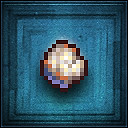Install Steam
login
|
language
简体中文 (Simplified Chinese)
繁體中文 (Traditional Chinese)
日本語 (Japanese)
한국어 (Korean)
ไทย (Thai)
Български (Bulgarian)
Čeština (Czech)
Dansk (Danish)
Deutsch (German)
Español - España (Spanish - Spain)
Español - Latinoamérica (Spanish - Latin America)
Ελληνικά (Greek)
Français (French)
Italiano (Italian)
Bahasa Indonesia (Indonesian)
Magyar (Hungarian)
Nederlands (Dutch)
Norsk (Norwegian)
Polski (Polish)
Português (Portuguese - Portugal)
Português - Brasil (Portuguese - Brazil)
Română (Romanian)
Русский (Russian)
Suomi (Finnish)
Svenska (Swedish)
Türkçe (Turkish)
Tiếng Việt (Vietnamese)
Українська (Ukrainian)
Report a translation problem


 Netherlands
Netherlands 


























1.Nf3
1.Nf3 develops a piece instead of moving a pawn to begin the game. The knight develops to a good square that controls the center while keeping flexible options with the central pawns. A later d2-d4 move may transpose to a 1.d4 opening (while avoiding certain lines), while a later c2-c4 move might transpose to the English Opening.
The Reti Opening can be used to refer to two different starting positions:
1.Nf3, sometimes known as the Zukertort Opening
1.Nf3 d5 2.c4, sometimes known as the Reti Gambit.
Pros
Flexible
Develops a piece and controls e5
Prepares to castle
Cons
Blocks the f-pawn
Allows 1...c5, controlling the d4 square from the side
Allows Black many options
Variations
Because of its flexibility, the Reti Opening often transposes into something else, but there are some independent lines.